
CIRCLING THE SCEPTRED ISLES
Part I
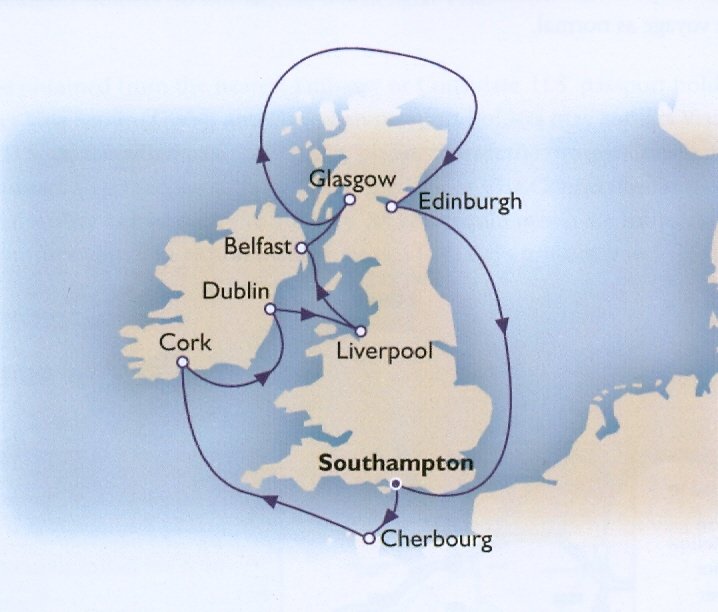 |
|
ON |
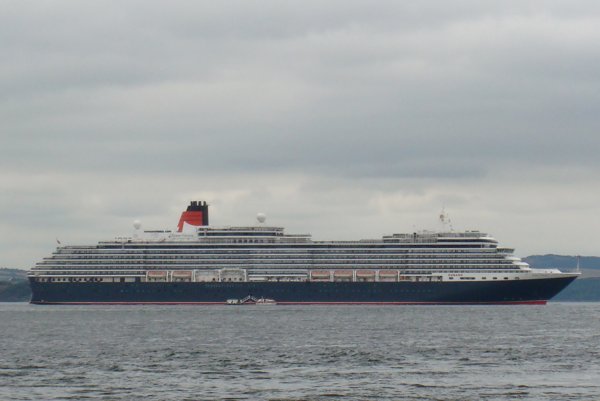 |
|
Queen Victoria |
Launched in December 2007,Queen Victoria is the second of Cunard's trio of luxurious cruise ships. It was preceded by the larger and much, more impressive, Queen Mary 2,launched in 2004. Queen Elizabeth, a structural duplicate of Queen Victoria, is decorated with decor distinctive during the 1920s and 1930s. When 'named' by Queen Elizabeth II in October 2010, it, too, will sail the oceans blue.
Queen Mary 2
Tonnage: 148,528 gross tons
Decks: 17 total
Capacity: 3000 passengers
Crew: 1200
Queen Victoria
Tonnage: 90,000 gross tons
Decks: 16 total
Capacity: 2,014 passengers
Crew: 900
Queen Elizabeth
Tonnage: 90,000 tons
Decks: 12
Capacity: 2092 passengers
Crew: 900
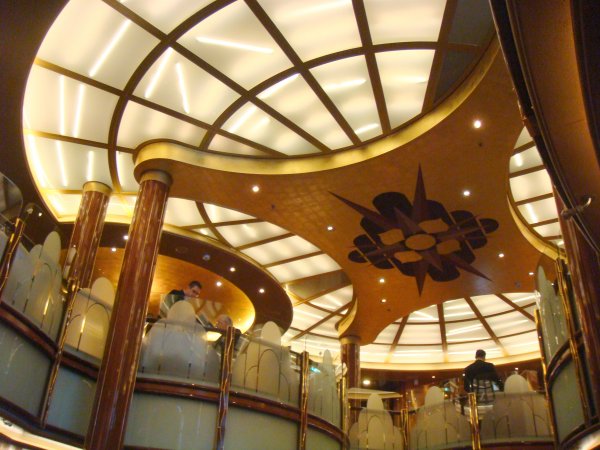 |
|
Chart your course with the Compass |
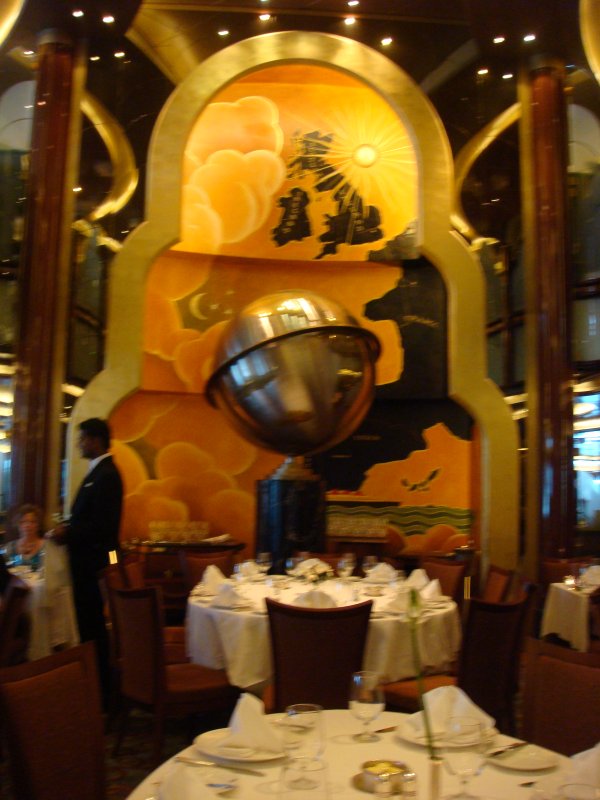 |
|
Dining while circling the Globe |
For those wishing to spice up the formal nights, the boxes that encircle the Royal Court Theatre could be rented for a few pounds for the evenings' performances.
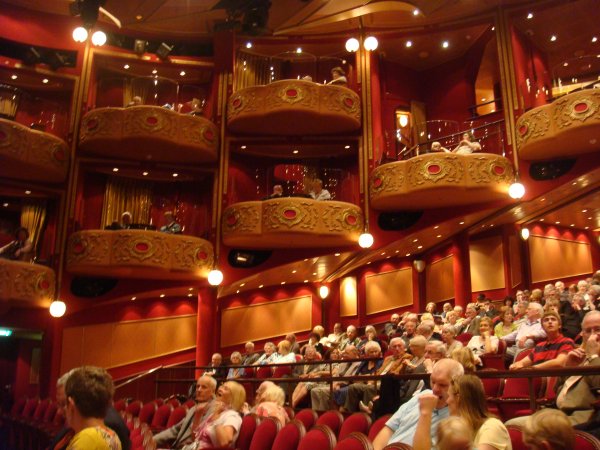 |
|
Show Time |
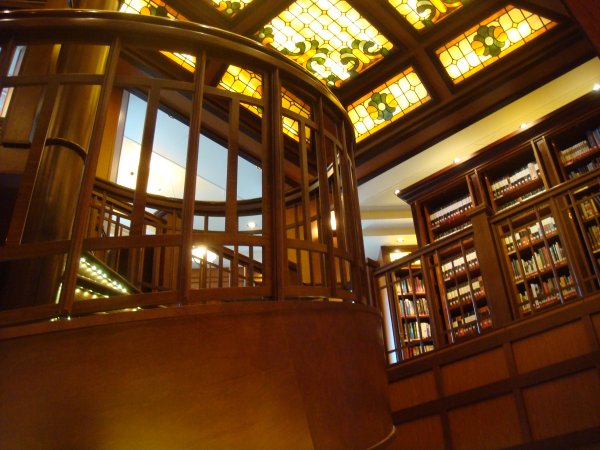 |
|
Lofty Library - only two books at a time |
Our ship sailed out of Southampton, a seaport that did business back in Anglo-Saxon times. Its trade faltered and when Daniel Defoe visited there early in the 18th century, he said,"London has eaten it up. It is a place in the death throes for want of thriving commerce." Over time things changed and sheltered from the currents and winds that blow from the west out of the wide Atlantic, the port grew in importance and is now a thriving trading centre and the terminal of great transatlantic liners.
From Southampton's havened harbour, we sailed into the Solent, the waterway that makes the Isle of Wight a twenty minute ferry ride from England. We passed east of the Isle of Wight and through what is known as Spithead, into the English Channel. Spithead takes its name from the Spit, a sandbank stretching south from the Hampshire shore for 5 km (3 miles). It is famous for the Fleet Review, a British tradition involving the monarch reviewing the massed Royal Navy.
It is infamous for a Royal Navy mutiny that took place here in 1797. The Nore mutinies at Spithead (an anchorage near Portsmouth) lasted from 16 April to 15 May, 1797. Sailors on 16 ships in the Channel Fleet, commanded by Admiral Lord Bridport, protested at the living conditions aboard Royal Navy vessels and demanded a pay raise..It was not in the interests of officers to have an unhappy ship. Admiral Lord Howe intervened to negotiate an agreement that saw a Royal pardon for all crews.
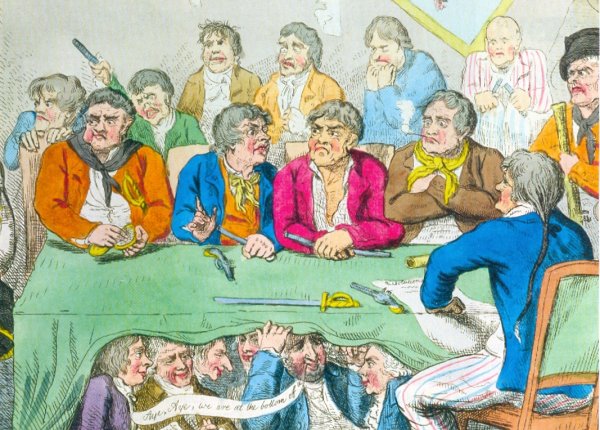 |
|
Nore Mutiny |
Spithead is the site from which a great many notable naval men have sailed into history. One was named William Bligh. In 1787, Captain Bligh impatiently awaited word from the Admiralty that would see him sail his little vessel, Bounty, on a 16,000 mile trip to Tahiti. He was anxious to be off before winter winds made the trip a tragedy in the making. Even in the relatively sheltered Spithead area, the weather was deteriorating so badly, he could barely make it to the Isle of Wight. Word came finally and Bligh and his crew of 46, departed on 23 December. Ahead lay a lifetime of disaster, death and determination, compressed into a few months of unbelievable madness.
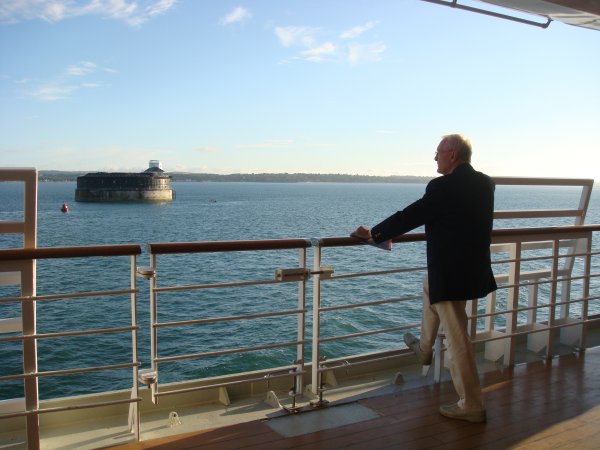 |
|
Solent Sailing |
Our ship, Queen Victoria, entered the English Channel, the mighty moat that has saved these sceptred isles from a host of invaders. Haunted by history, this 300-mile long stretch of water, whose width varies from 21 to 100 miles, has seen the sails of Caesar, William the Conqueror and a cascade of kings, all bent on finding fortunes and making either this side or that, an addition to their Colours and their kingdom.
In 1588, beacons lit the length of the coast as soon as Spain's fleet was sighted, the flaunting flags of their armada filling the narrow sea. Despite the fearsome size of the flotilla of England's nautical nemesis, Dover's shores were never darkened by Spanish soldiers. Thoroughly chastened by the British fleet, they fled the channel, bombarded and beaten by Drake's daring, dauntless sea captains. .
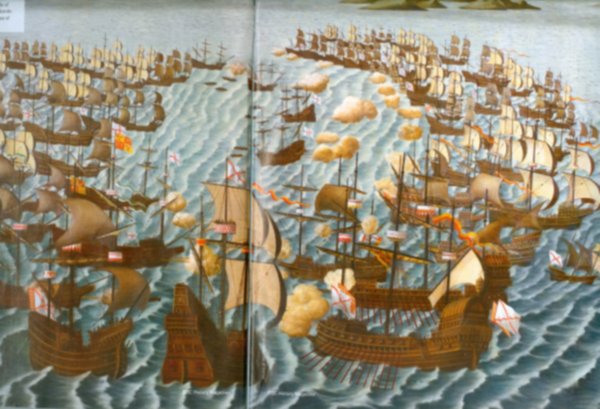 |
|
Spanish Armada |
Seeking surcease from the butchering British crews and the wind's relentless battering, their shattered ships made for the North Sea, where the wind and wild waves finished what fireships had failed to do. Loss of life was severe. One of the Spanish galleons, La Girona was shipwrecked along the north coast of Scotland. Of the 1300 sailors & noblemen on board, only 5 survived. The wreck was discovered in 1968/9.
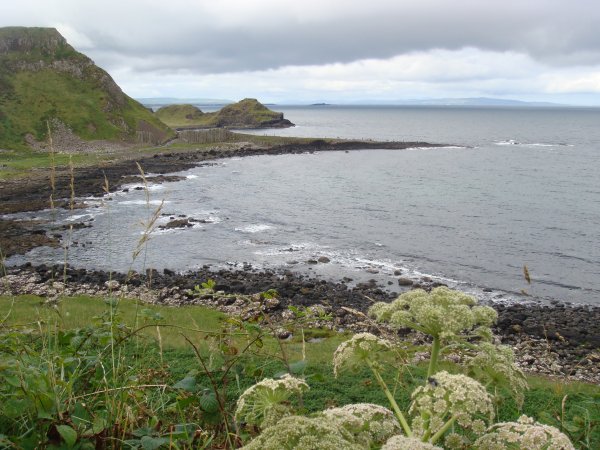 |
|
Here along this north coast of Scotland, only remnants remained of the vaunted Spanish Armada. |
The wind still whistles across this great body of water, dominated by the dreadnoughts of Britain's Grand Fleet for so long, but it is now dotted with distinctive oil wells, the same sea benefiting Britain with black gold for the country's coffers. Norway and Germany share this bounty from the bottom of the famous sea.
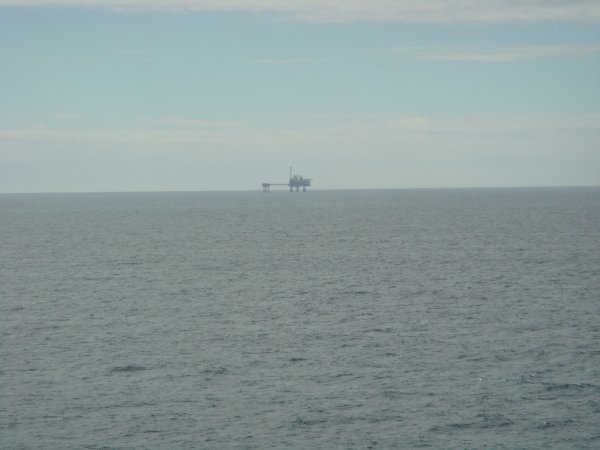 |
|
North Sea Oil Well |
In 1940, another time of even greater peril at a place named Dunkirk, small boats and battleships in an operation codenamed Dynamo, crossed and re-crossed.
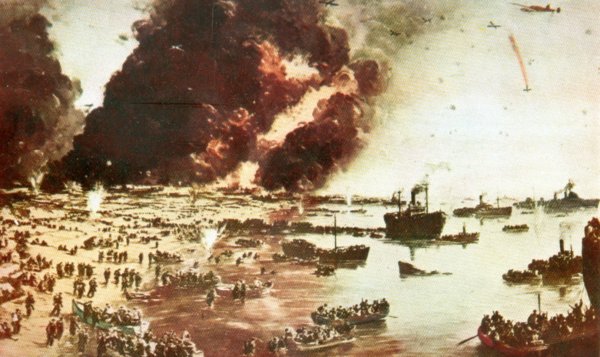 |
|
Dunkirk |
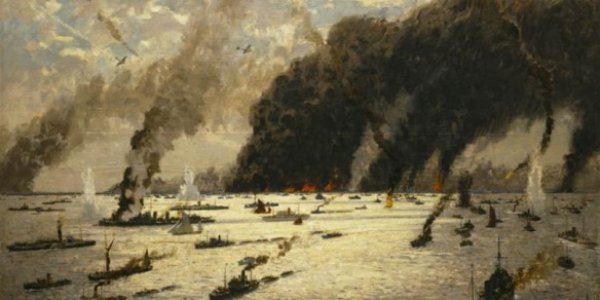 |
|
Dunkirk |
what was then a suicidal sea and succeeded in saving soldiers to fight again and so bring freedom to a cruelly conquered continent.
No matter how often one traverses this historic highway, one cannot help thinking of the sagas its seen, the men and the moments these waters have witnessed.
Our destination, like that of many famous folk before us, was Cherbourg, whose entire history has been shaped by the sea. A natural harbour on the coast of Normandy, it is considered the gateway to the English Channel.This deep-water port and strategic harbour has been a major commercial centre since the Caesars sailed the bounding main.
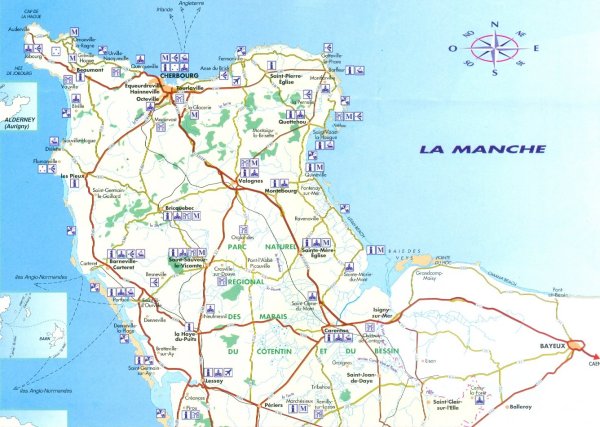 |
|
Cherbourg |
Louis XIV fortified it in the 17th century and made it a major naval base. The defensive system of the Port of Cherbourg is arranged around three fortified structures, described as "petrified warships." The British saw these forifications as a dagger directly pointed at Portsmouth and the Isle of Wight, so they regularly attempted to reduce them to rubble.
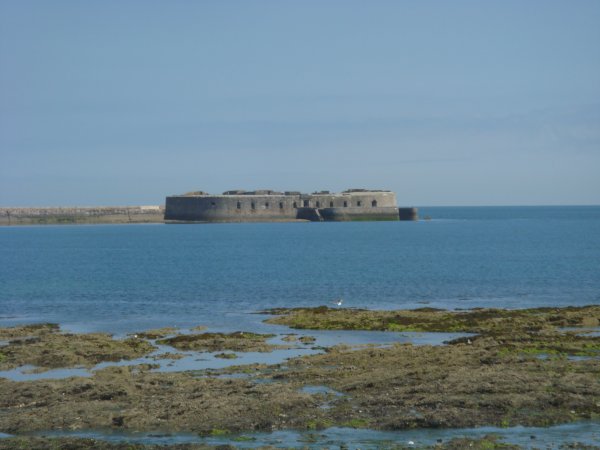 |
|
fort de Querqueville |
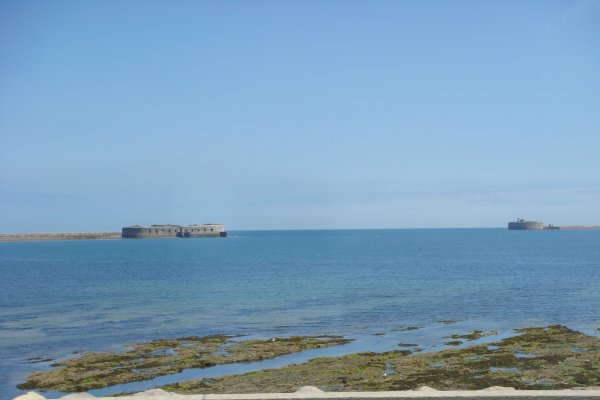 |
|
Remnants of Cherbourg Forts |
Still hailed as home by the French navy, Cherbourg boasts a cross-channel ferry service, a cargo port, a fishing harbour and a world-class marina. It is situated at the north end of the Cotentin Peninsula, the first territory conquered by natives from the north called Vikings. Normandy was named for these fierce foreigners, who attacked and sacked the French coast throughout the 9th century. The Viking invaders were followed by others, who came not to savage but to save France and Cherbourg was a prime objective following D-Day.
Cherbourg is the gateway to Normandy's unmatched scenery, the region being the perfect introduction to all that is loved in France.
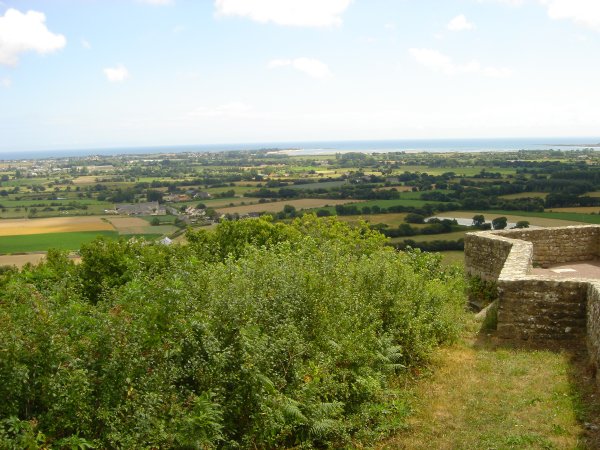 |
|
Normandy Countryside |
A few brutish bunkers remain to remind one of the savage fighting that occurred during WW II across Normandy. Our scenic drive took us through peaceful, picturesque regions, rich with lush, green pastures, bountiful orchards and neatly ploughed fields, framed by hardy hedges that could stop tanks in their tracks.
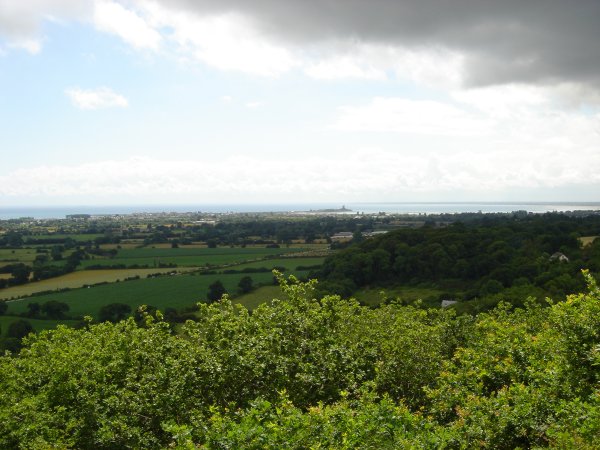 |
|
Peace, prosperity and beauty across the Normandy Countryside |
A panoramic view overlooking the east coast of the Contentin Peninsula. was particularly beautiful.
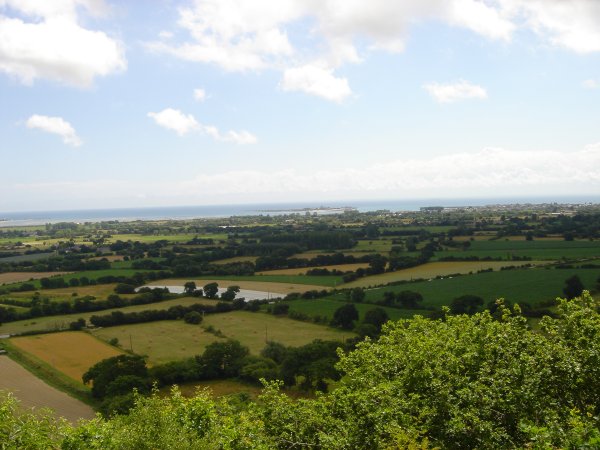 |
|
Landscape overlooking the Contentin coast |
Throughout the countryside, old Norman churches and fort-like manor houses were regular reminders of its medieval past.
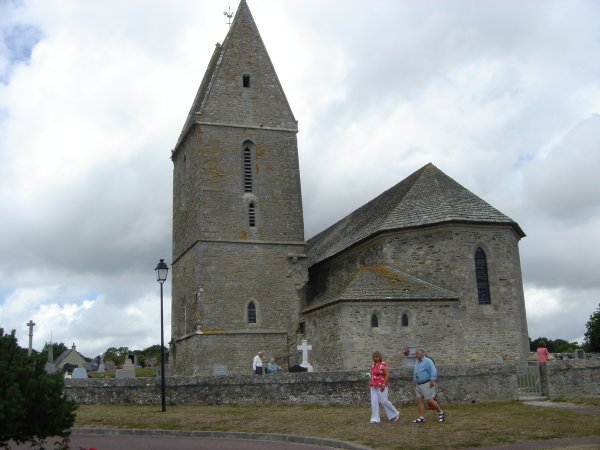 |
|
Normand Church |
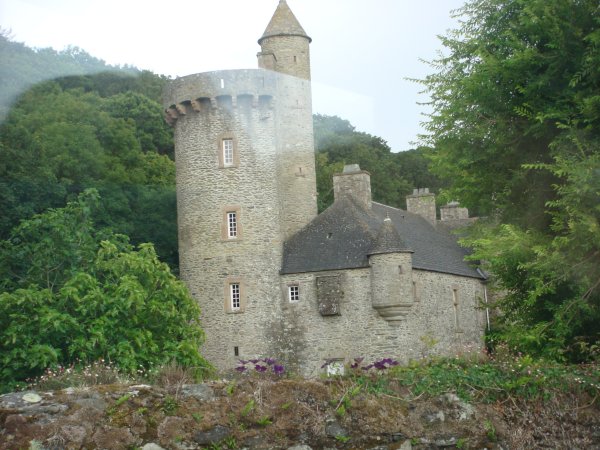 |
|
Normandy Manor House |
One of our stops was the fishing port and popular marina of St Vaast La Hougue.
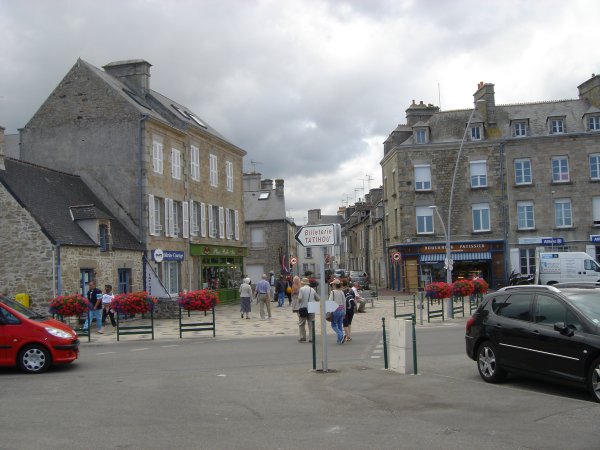 |
|
A street scene in St. Vaast La Hougue |
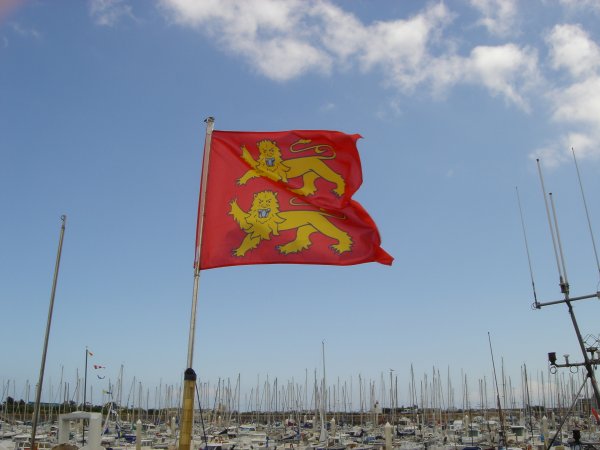 |
|
Fierce Flag of St Vaast La Hougue |
St Vaast La Hougue is a major oyster farming centre and tens of thousands of the shell-borne creatures were lying in long lines along the shoreline seeking the life-giving sea to surround them. While wonderful providers for the folk in the area, far too few of the bivalves were bountiful as far as pearls were concerned.
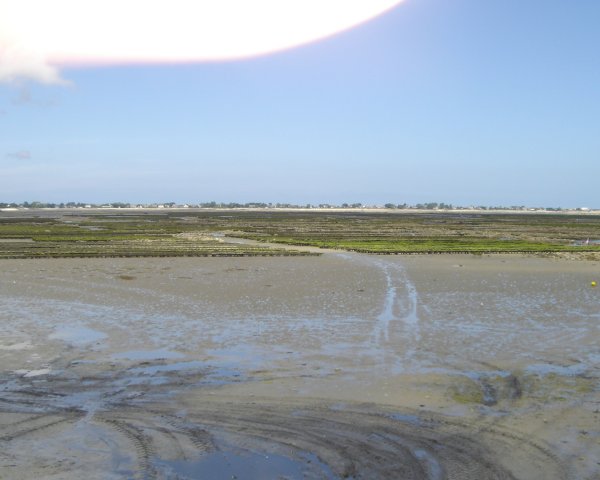 |
|
Oysters awaiting the sea. |
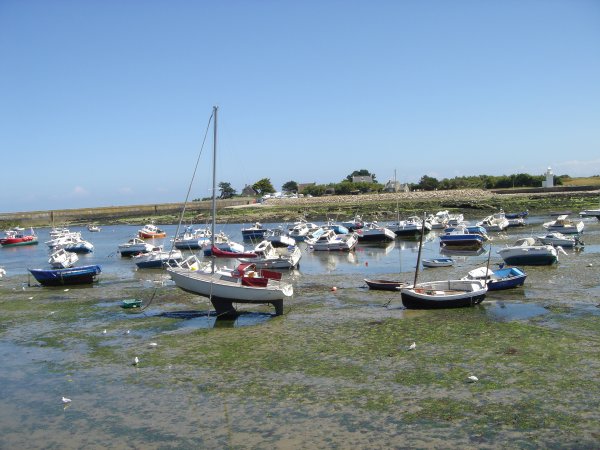 |
|
"A fine mess you've gotten us into!" |
In a central square of this peaceful place, there is an ominous reminder of war and its weapons; a heavy howitzer once occupied this strategic location, intent on monitoring and menacing any military movement off shore.
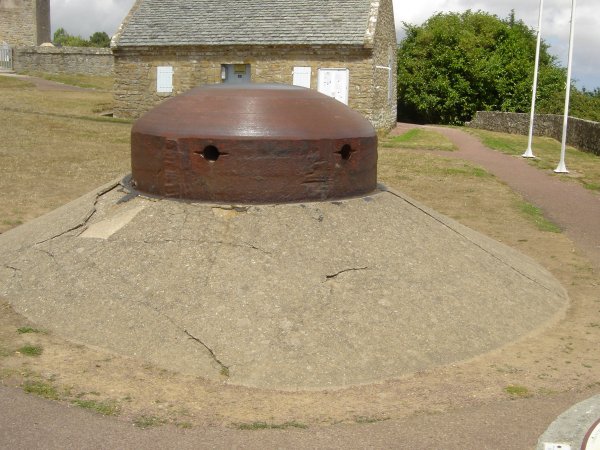 |
|
Axis Artillery |
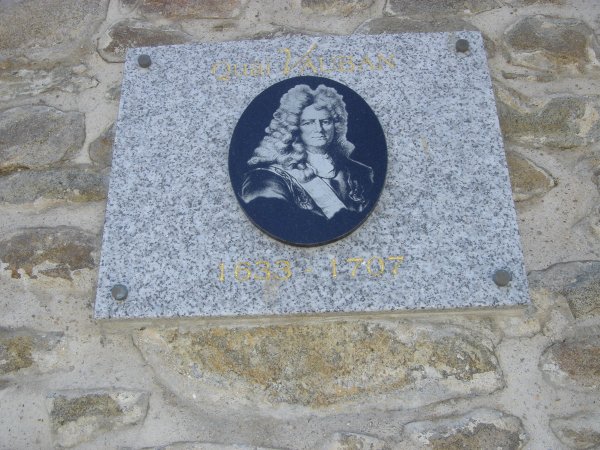 |
|
Vauban |
Over the fifty-year period from 1653 and 1703, Vauban, Louis XIV's outstanding military engineer, established an observation and defence system comprised of 160 fortifications. These massive strucures withstood many a siege and their silhouettes still dominate the skyline throughout France. The 12 sites inscribed on the World Heritage List are representative of the exceptional architectural, territorial and landscape values of Vauban's fortified sites.
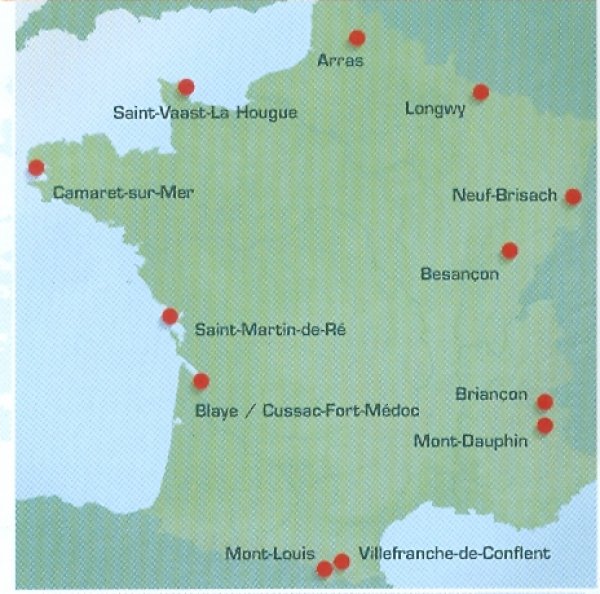 |
|
12 Major Sites in mountain, coastal and landscape locations. |
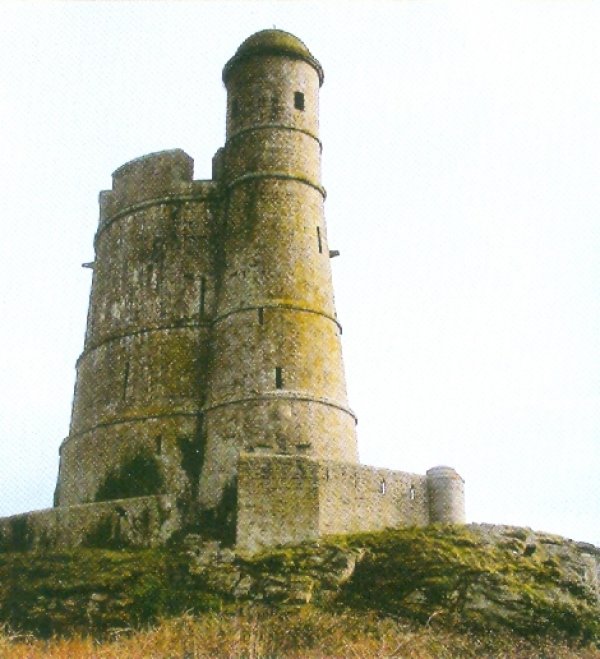 |
|
Silent Sentinels. |
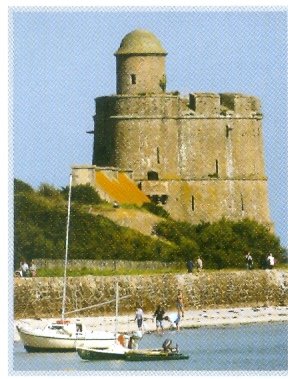 |
|
Vauban's heavy handiwork in the harbour. |
Barfleur
Tension and terror were ever-present in the lives of French folk, who could only wait and wonder when the next assault would occur and their mortal enemy, England, would send more troops to torch their towns, devastate the countryside and kill, kill, kill. One of the king's who claimed France as an important part of his patrimony was Henry V. He was a fiery fighter who took delight in burning every building he encountered, for he said, fires and war went together like sausage and mustard. Devastation described the systematic looting, sacking and terrorizing of the towns through which English soldiers riotously ravaged, The threat of death by disease or sword made warring worthwile, for fortunes were made by many who survived the savagery.
Barfleur was the site of some of history's meanest and momentous events. This coastal town played a very important part in the conflicts that occurred so often between England and France, their fleets frequently fighting off its shores with thousands destined to drown in its depths. One such battle occurred on 29 May, 1692 when the fleets sighted each other at first light off Cape Barfleur. Because of the calm sea, the cannons did not cough death until eleven in the morning, five hours after sighting. HMS Britannia was one of the great ships engaged that day.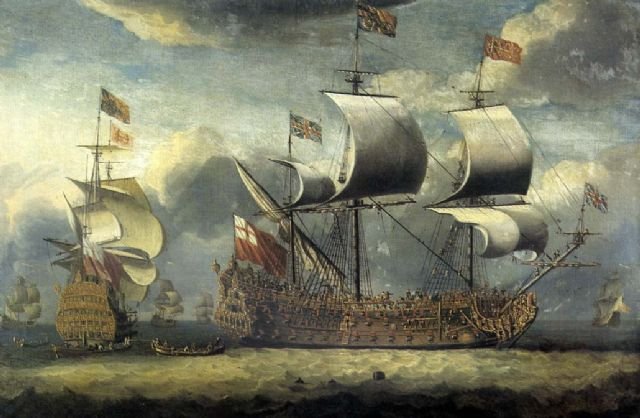 |
|
HMS Britannia Man-O'-War |
The ceaseless confrontations date right back to the Conquest, when a French duke became an English king.
William, Duke of Normandy, claimed the throne of England based on a promise made to him by Edward the Confessor, who, according to some historians, saw himself as a member of the Norman ducal family and did offer the throne to William in 1051. However, either regretting or forgetting his promise, Edward nominated on his death bed, Harold, as his successor. The Witan, worthy representatives of the nation, confirmed Harold's kingship. William, refusing to accept no for an answer, vowed to take by force what he figured falsehood had denied him.
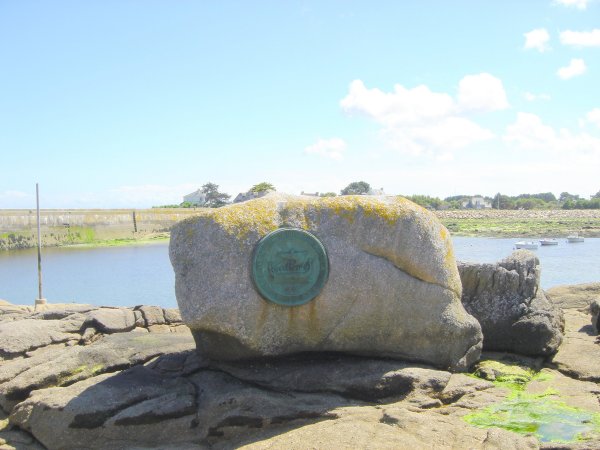 |
|
Plaque marks the place where it all started.. |
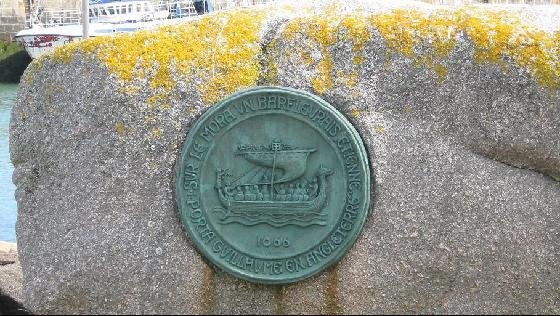 |
|
Duke of Normandy Set Sail from here. |
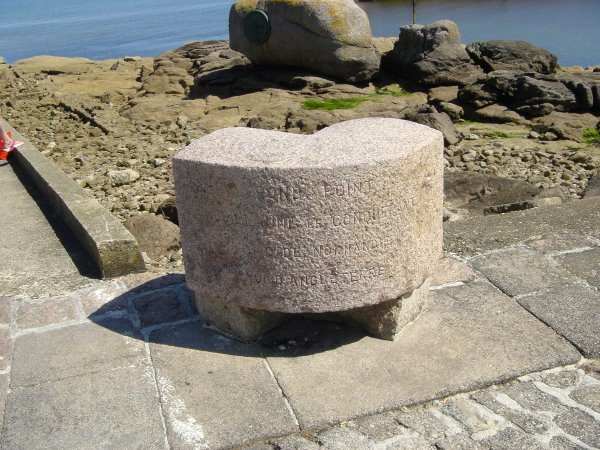 |
|
Simple inscription summarizes the sequence. |
In William's home town, Bayeux, the exploits of the Conqueror were uniquely documented on the Bayeux Tapestry, an embroidery on linen using wools of various colours. It is 225-feet long and dates from from 1067. Its 58 panels provide an 11th century record of Norman life and weaponry.
 |
|
La Tapisserie de Bayeux |
William superintended the assembly of his hy-bred force of sailors and soldiers. Carpenters and artisan-soldiers built hundreds of ships in ports along the Norman coast and when ready, all assembled at the mouth of th River Dives.
 |
|
Fleet being built.. |
Current consensus suggests they numbered about 700 of various sizes and types. All were comparatively light and would last only for the one-way trip, because William did not intend to return. Each had one small steering oar and large sheet sails to propel the vessels at about 4 knots. Between 40 to 50 feet long, they needed favourable winds to make any headway at all.
Building ships was one thing, but finding fighters to man them was another. Followers were few for many claimed fighting in foreign lands was not part of their committment to the Conqueror. Only when William promised plentious loot for the lot, did they respond in eager numbers to the Conqueror's call to arms.
In 1066 the long-haired star of Halley’s Comet blazed through the skies above England. This omen augured well for William, who mustered an invasion fleet off the coast of Normandy, but lack of the right winds delayed William's departure for several precious weeks. Finally, fair winds blew from the south and William decided to cast off and conquer. At the end of summer. he set sail with 700 ships containing, perhaps, as many as 7,000 men.
 |
|
Anchors Away.. |
Seeming to fill the sea itself and surely a scene of some wonder, his stately fleet sailed from the rocky shores of Barfleur.
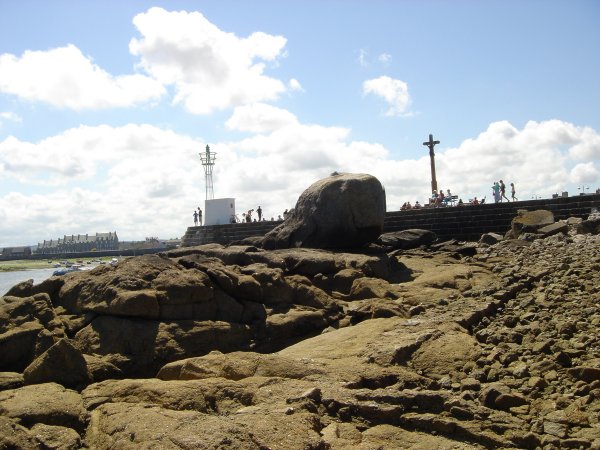 |
|
Barfleur's rocky, rocky shores |
The Bayeux Taperstry, the only source for our sight of the fleet, indicated bows that reared vertically in the shape of sea-horses' heads, their sterns curled upwards to give the effect of beasts' tails.
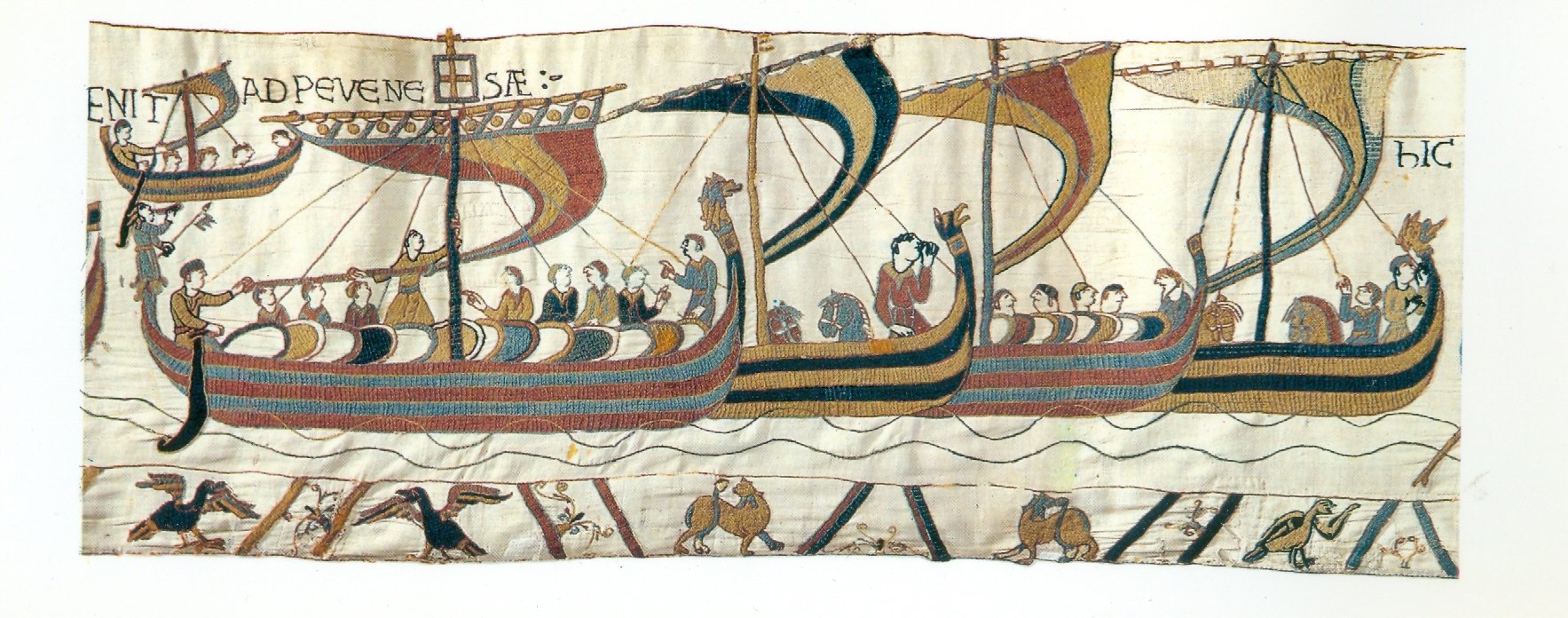 |
|
Bows and Sterns . |
William's flagship, Mora, and others like it, carried warriors and knights, bearing projectiles that included spears, javelins and stones to hurl at oncoming foe with slings or strong right arms. The basic,weapon was the bow and arrow, the weapon of war and hunting for 30,000 or 40,000 years. Larger vessels transported horses, bulky baggage, arms and stores.
They land and unload at Pevensey Bay in Sussex on either September 28 or 29.
 |
|
Land and Unload . |
 |
|
Hurry to Hastings . |
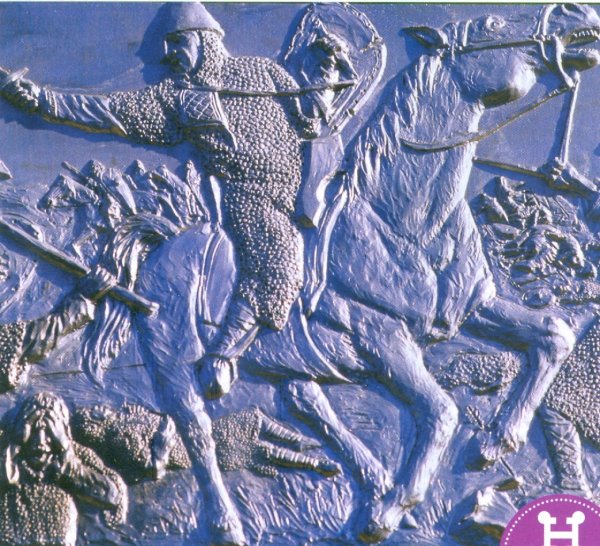 |
|
This plaque depicts the Battle of Hastings. |
At a place called Hastings, history saw Harold's defeat and death, killed either by an arrow in the eye or decapitated by William himself. The Duke of Normandy was crowned king on Christmas Day, 1066. This single-minded, savagely brutal ruler, became not the successor to distant relative Edward as king, but the annihilator of the late Anglo-Saxon governing class of England, replacing them with Normans.
Succeeding English sovereigns sought time after time without success to return the favour to France by becoming England's answer to worthy William. These endless endeavours of kings, counts, knights and other nobles cost billions in bullion and millions of lives of poor folk who had to do the fighting, leading in the end to a lasting but somewhat prickly relationship.
Edward III was one of these frequent, unfriendly visitors. When Edward III stepped ashore, only to fall flat on his face and bloody his nose, no one laughed but nobles accompanying him expressed fear at the fall and besieged him to re-board the boat.'Sir, for God's sake enter again into your ship, and come not aland this day, for this is but an evil sign for us.' Edward quickly responded to their doleful declarations. 'Wherefore? This is a good token for me, for the land desireth to have me.' They immediately got the drift of this drivel and all his men, 'were right joyful.'
Reassured, they proceeded to ransack the region until they came, "to a good port and good town called Barfleur," whose folk gave up without a fight. The riotous raiders made off with the town's gold, silver and jewels and then, "did what they list" for there was none to resist. In this manner they terrorized many other towns and seized so many riches,"that it was marvel to reckon it."
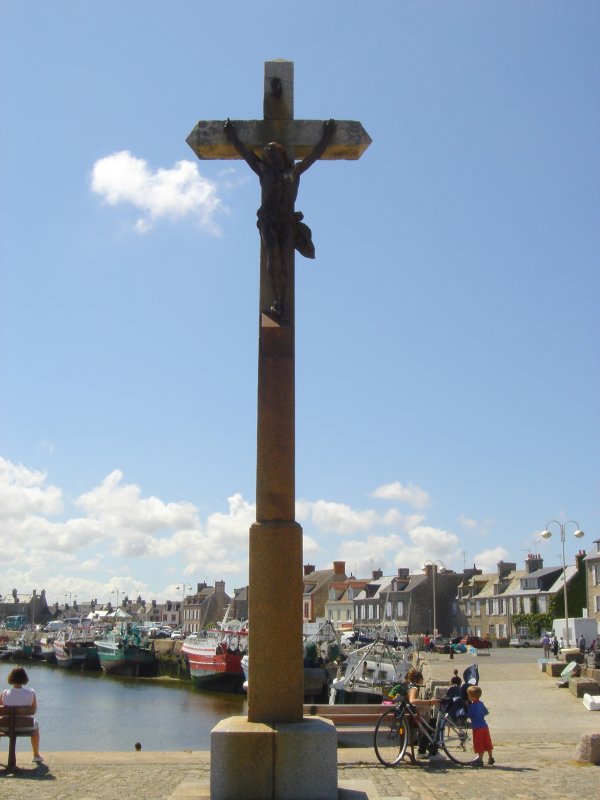 |
|
Barfleur, a tiny town torched by the Black Prince in 1356. |
In the early summer of 1346, Edward III had collected an army in Portsmouth and with a good wind, he made sail with a 1000 ships, pinnaces and supply ships. He was bent on inflicting economic damage and by so doing, force Philip into battle.
On the 13th of July Edward's first act on reaching the shore was to knight his eldest son, Edward, and create him Prince of Wales. Together they set out through the Cotentin and proceeded to devastate the whole countryside and burn the town of Barfleur. Young Edward was heralded for the ravage and ruin he caused. "There was the fair and noble Prince, who made a right goodly beginning. All the Contenin he overrode and wholly burnt and laid waste, La Hogue, Barfleur, Carentan, Saint-Lo and Bayeux. But afterwards, meseems, the King and the Prince together rode through Normandy and laid waste all the country."
Another English monarch, Henry I, fathered a good many children, but out of his nine or so sons, only William the Aetheling, was legitimate. Henry had spent much of the summer and late autumn in France involved in diplomatic negotiations with Louis VI, the king of France and the Norman barons. He achieved what he wanted: recognition from the French king and the local Norman nobility of the position of his son William the Aethling, as Duke of Normandy, as well as his nominated heir and successor.
Over the years off the coast of Barfleur, a great many ships sank in the sea and one of them killed a king. On 25 November 1120 White Ship (la Blanche-Nef), a twelfth-century vessel, sank off Barfleur. The heavy loss of life led to much strife and as a result, many more were stricken.
The Blanche Nef/White Ship was the very latest in Norman maritime technology and one of the finest and largest ships then afloat. It was captained by one Thomas Fitz Stephen, who offered to take Henry from Barfleur to England. Henry declined, but his son, William, accepted and joined a group of the younger Norman nobility on the White Ship. Among them was Stephen de Blois, Henry's nephew, who at the last minute, decided to return at a later time and left the vessel.
The prospect of sailing aboard the latest and fastest addition to the Norman navy was a thrilling prospect and to toast the occasion, William and his friends broke open a cask of wine. One cask became two and then three and by the time they were ready to cast off, most aboard the boat including the crew were inebriated. They decided to see if their prize vessel could catch up to Henry's ship, which had left some hours earlier. A night-time crossing was not unusual. In many ways it was easier to navigate at night using the North Star, providing the sky was clear. In order to save some time, they took the risky northern route and in so doing, cut too close to land, striking the rock known as the 'Quilleboeuf'. While they were only a half mile off shore, they were feeling no pain and there was no rescue party at the ready. All aboard but one drowned and that included the next king of England.
King Henry lived for another 15 years, but had no son, so left the crown to his daughter, Matilda. Stephen of Blois challenged the decision and their conflict over the crown caused a civil war known simply as, 'The Anarchy'.
The sea was central to any of the myriad conflicts that occurred between France and England with France frequently second best. An English admiral bragged about their ability to meet and beat French attackers. "I do not say the French cannot come. I only say they cannot come by water." A similar sentiment was jokingly made by our French guide, who said that France had no other nation to fear but England and in all of their fights, France could be counted on to lose.
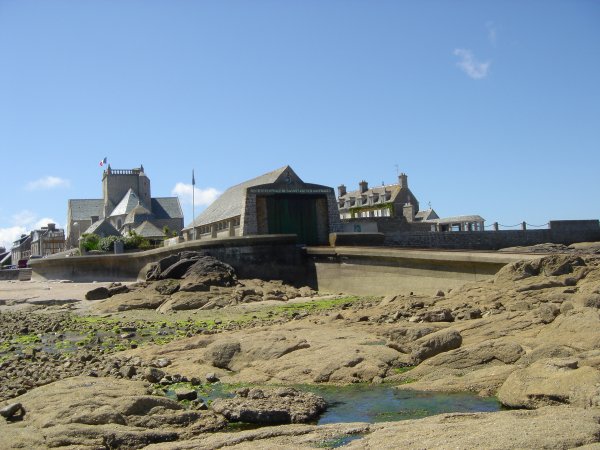 |
|
Barfleur, stopping place for France's national nemesis - England. |
From this rocky Barfleur shore, perhaps, even treading on the self-same stones on which I stumbled, Richard the Lionheart frequently cast off for England. First, following the death of Henry II, his father, on 6 July 1189, the crown became his. He arrived at Barfleur on 13 August and sailed to Portsmouth where he was wildly welcomed. He was subsequently crowned at Westminster Abbey on 3 September, 1189.
 |
|
Westminster Abbey |
Following his various escapades in Europe, which included a Crusade, Richard was captured while returning home and held two years for ransom by King Henry VI, Holy Roman Emperor. The ransom that nearly broke England, the country he treated simply as a cashcow, was finally delivered when his mother, Eleanor, arrived with the last payment. Richard and she headed for home, departing from Barfleur and arriving in Sandwich on 13 March 1194.
Richard immediately began preparing an invasion fleet. On 12 May they departed Portsmouth for Barfleur, the 100 ships laden with soldiers, provisions and siege engines. From Barfleur Richard and his mother proceeded to Caen, thence to Bayeux where they were cheered by a great crowd singing, "God has come again in strength, It is time for the French king to go." Richard never returned to England. He died from an infected arrow wound in the shoulder on 6 April, 1199, aged 42.
 |
|
English/French Fight On |
Whether victor or vanquished, the sea always took its toll, claiming thousands of English and French lives over the years. A starkly simple stone monument laments their loss.
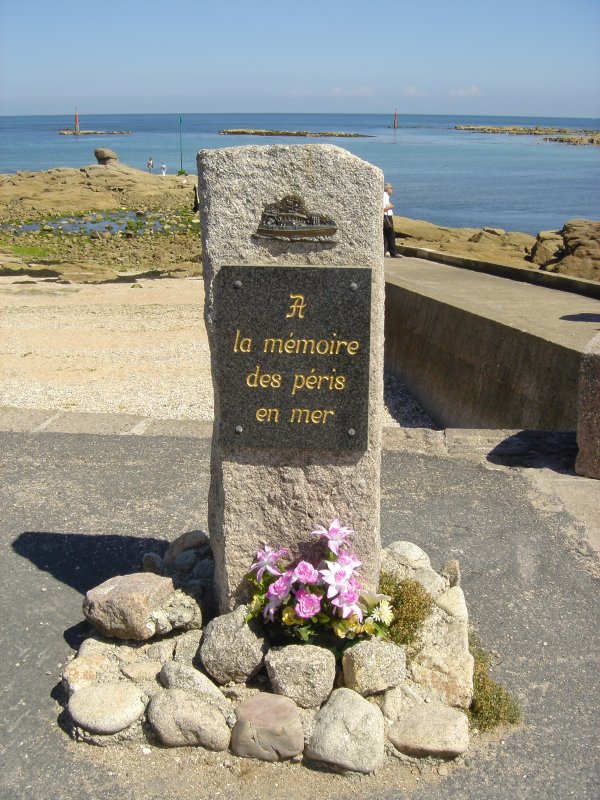 |
|
"To the memory of those perished in the sea." |
I bade goodbye to Barfleur reluctantly, for it had hosted so much history and it was fascinating to sense it in the surroundings of which I was then a part.
Meanwhile, Geri took a different tour, France's greatest hero pointing the way.
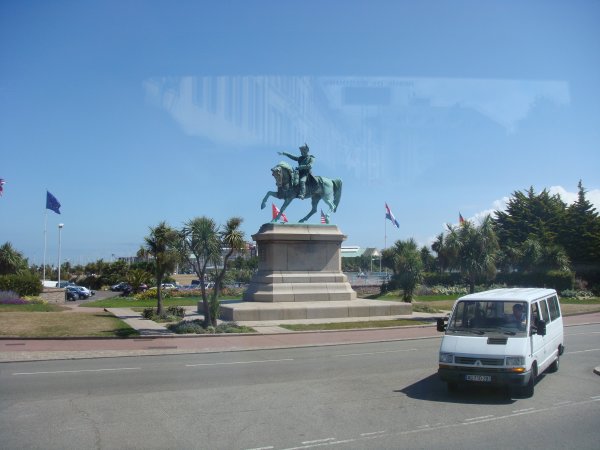 |
|
Napoleon |
From Cherbourg, she chose to explore Cape La Hague, which provided a panoramic drive along dramatic cliffs and wild coastline, its sandy stretches alernating with high, rocky, ragged ridges.
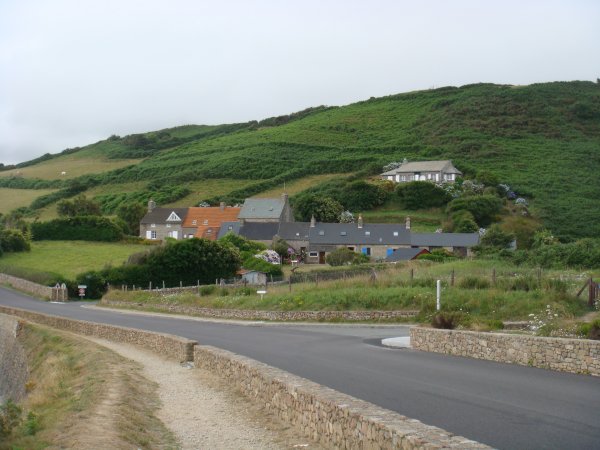 |
|
Such scenic sights abound |
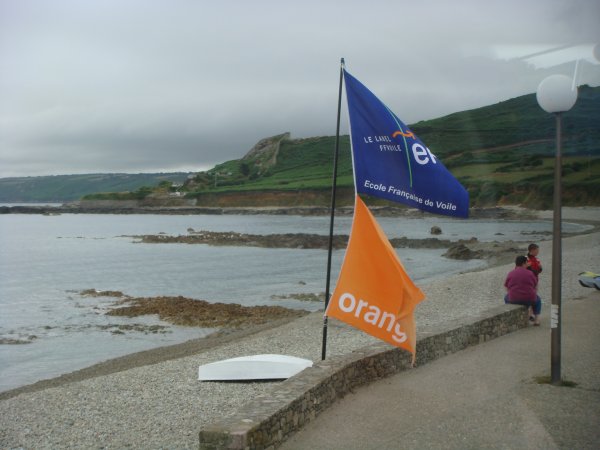 |
|
Coloured flags wave a warning to ships to be wary of the wild coast. |
Ancient Normand houses likewise lined that route, still standing as solid as the rocks from which they were built.
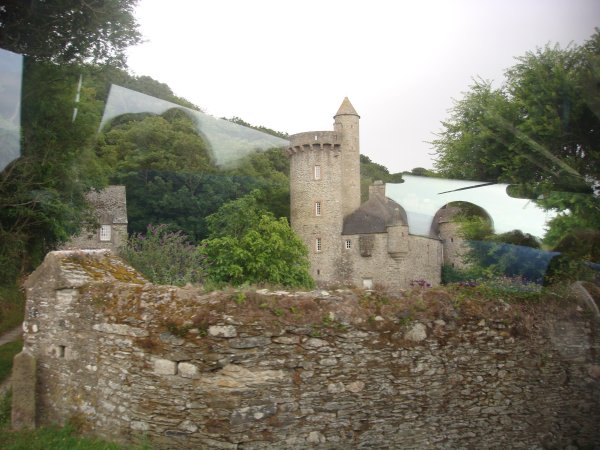 |
|
Normand manor house |
En route their drive took them through small villages, the first of which was Port Racine, a Norman fishing port considered to be the smallest in France. It was built during the Napoleonic era and is still in use.
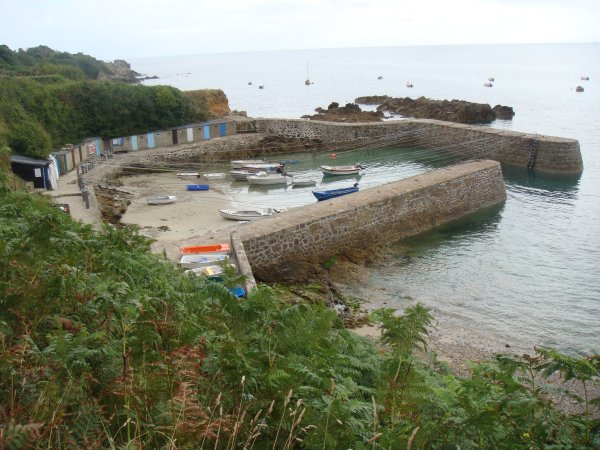 |
|
Find the fishing port. |
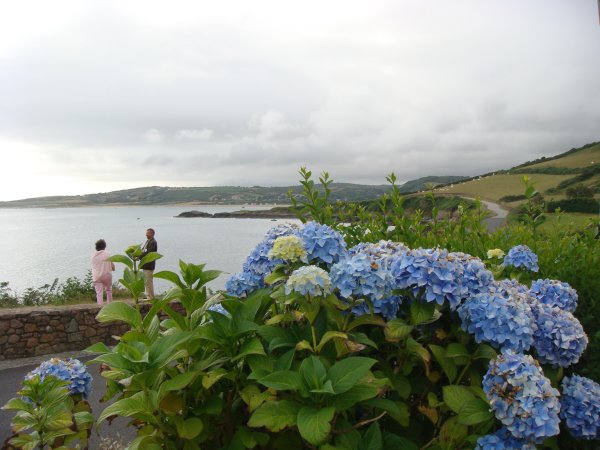 |
|
Fishing village of Port Racine |
On to Goury, home of an octagonal coastguard station which houses its famed Raz Blanchard lifeboat. Named after the fierce tides that batter the shore between the Norman coast and the island of Alderney, the boat and its crew saved many from the depths.
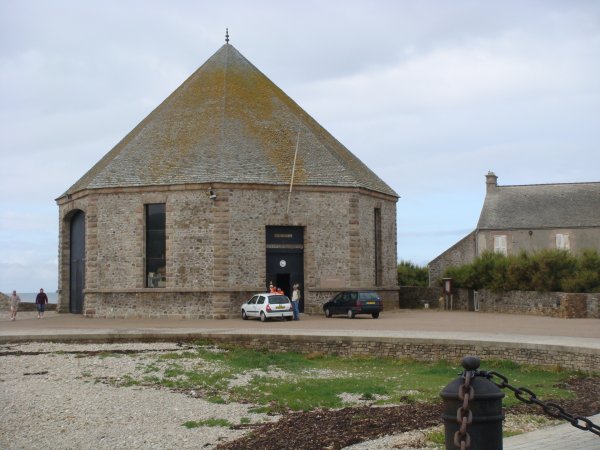 |
|
Goury Lifeboat Station houses the Raz Blanchard lifeboat |
Another stop included Nez de Jobourg, one of the highest cliffs in Europe, where the tourists were tempted with a Norman-style pancake and panoramic views of the rugged coast below. Most sampled both.
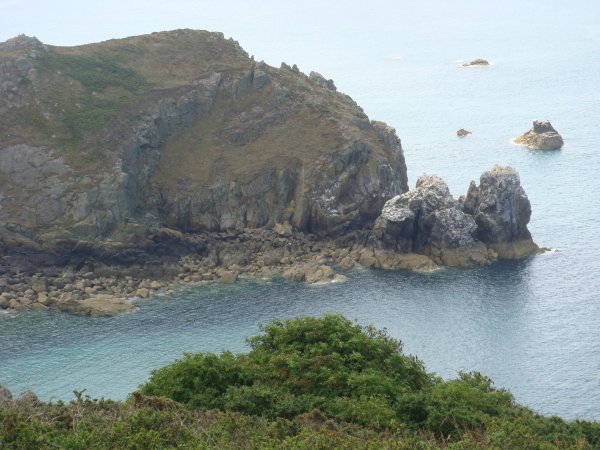 |
|
View from the Pancake Shop |
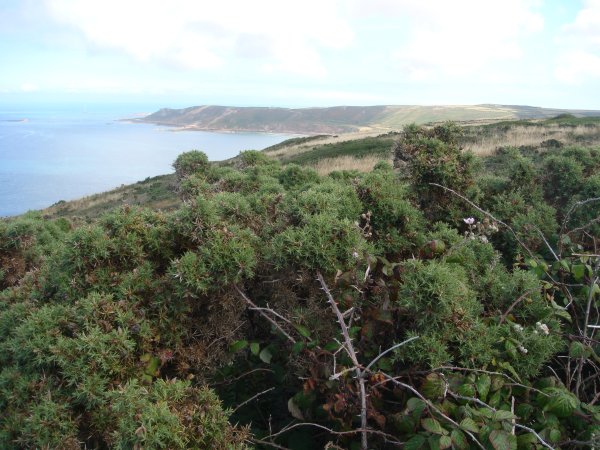 |
|
Beauty above; barriers below. |
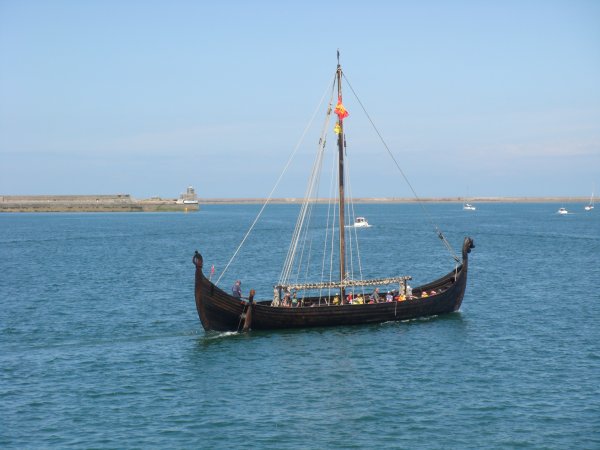 |
|
Pirates departed Cherbourg with their plunder. |
We left too taking nothing with us but fine memories.
Copyright © 2013 Website Administrator